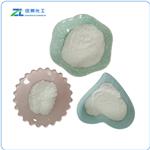
Pyridoxine hydrochloride
- Product NamePyridoxine hydrochloride
- CAS58-56-0
- CBNumberCB8853882
- MFC8H12ClNO3
- MW205.64
- EINECS200-386-2
- MDL NumberMFCD08064207
- MOL File58-56-0.mol
- MSDS FileSDS
Chemical Properties
| Melting point | 214-215 °C(lit.) |
| Density | 1.2784 (rough estimate) |
| vapor density | 7.1 (vs air) |
| refractive index | 1.5800 (estimate) |
| Flash point | 9℃ |
| storage temp. | room temp |
| solubility | H2O: 0.1 g/mL at 20 °C, clear, colorless |
| form | Crystalline Powder |
| color | White to almost white |
| PH Range | 3.2 |
| biological source | synthetic (organic) |
| Water Solubility | 0.1 g/mL (20 ºC) |
| Sensitive | Light Sensitive |
| Merck | 14,7982 |
| BRN | 3632435 |
| BCS Class | 1 |
| Stability | Stable. Protect from air and light. |
| LogP | -1.098 (est) |
Safety
| Symbol(GHS) |

|
|||||||||
| Signal word | Danger | |||||||||
| Hazard statements | H318 | |||||||||
| Precautionary statements | P280-P305+P351+P338 | |||||||||
| Hazard Codes | Xi,T,F | |||||||||
| Risk Statements | 36/37/38-39/23/24/25-23/24/25-11 | |||||||||
| Safety Statements | 26-37/39-45-36/37-16-7-24/25 | |||||||||
| RIDADR | UN1230 - class 3 - PG 2 - Methanol, solution | |||||||||
| WGK Germany | 2 | |||||||||
| RTECS | UV1350000 | |||||||||
| F | 8-10 | |||||||||
| TSCA | Yes | |||||||||
| HS Code | 29362500 | |||||||||
| Hazardous Substances Data | 58-56-0(Hazardous Substances Data) | |||||||||
| NFPA 704: |
|


